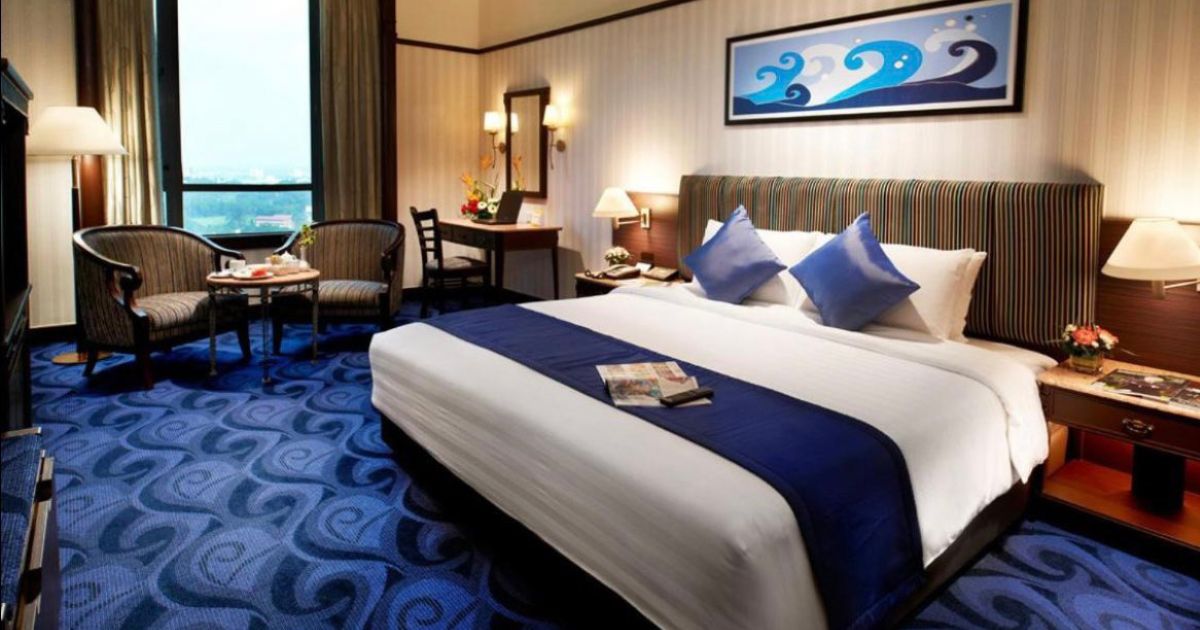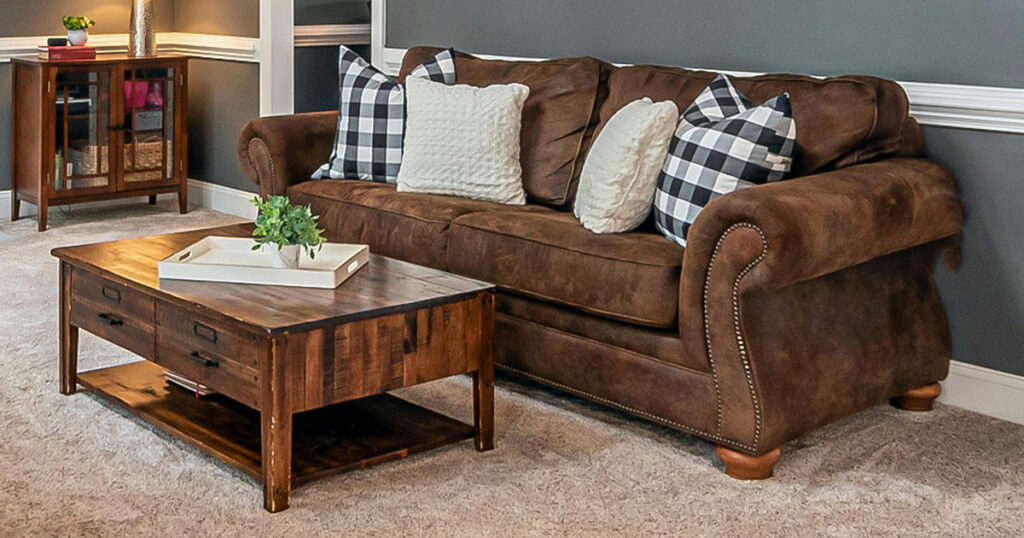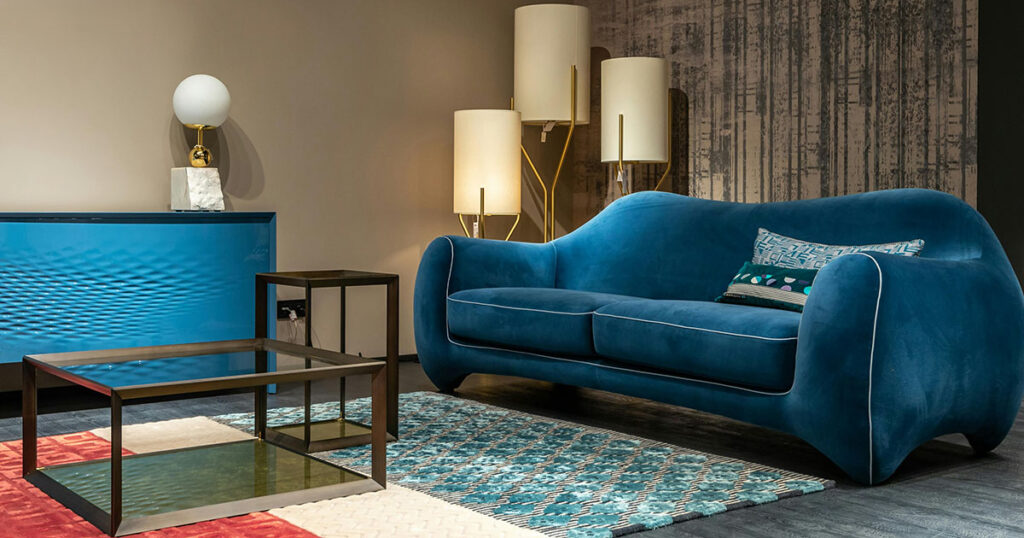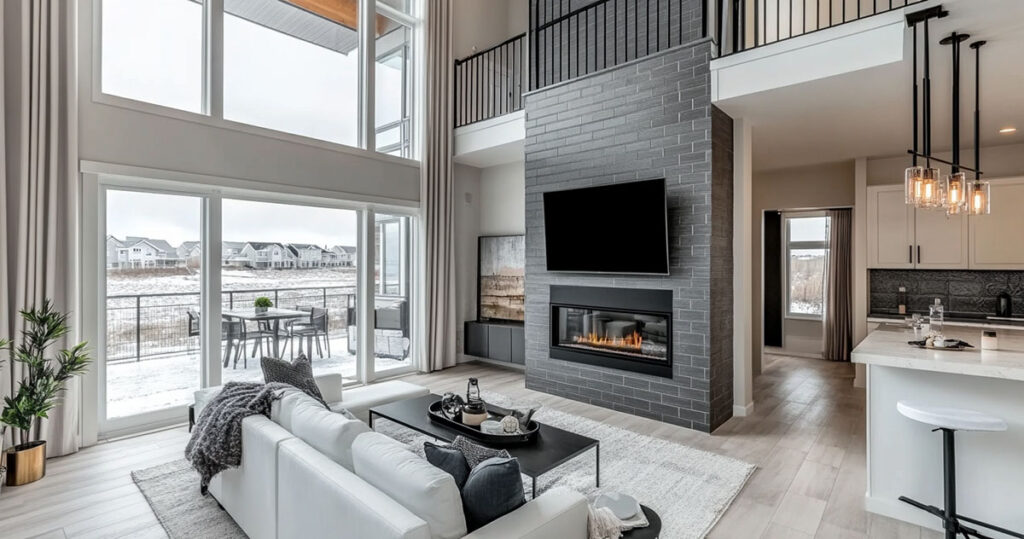When outfitting your hotel with the perfect floor coverings, the right rugs and carpets do more than just cover floors.
They enhance guest experience, reflect your brand identity, and impact your operational efficiency.
This comprehensive guide will walk you through the essential considerations for selecting ideal carpets and rugs for your hotel property.
Hotel Categories & Their Flooring Needs
Luxury Hotels (5-Star Properties)
Materials and Quality
Luxury hotels demand premium materials that convey opulence and comfort. Wool-rich carpets are the gold standard, typically using 80% New Zealand wool blended with 20% nylon. This combination provides the luxurious feel of wool with added durability from nylon.
High-grade woven Axminster carpets are particularly favored in luxury settings because they maintain their appearance even after years of use. Their construction allows for intricate patterns and exceptional durability—many can last 15-20 years when properly maintained.
Design and Aesthetics
Bespoke designs that reinforce brand identity are crucial. Luxury properties often invest in custom patterns that tell a story or create a unique atmosphere. These might include subtle brand elements or motifs that reflect the hotel’s heritage or location.
Hand-knotted Persian rugs or other handmade pieces are often used as accent pieces in lobbies or suites, adding cultural richness and prestige. These statement pieces can cost thousands of dollars but create memorable impressions that guests associate with exceptional quality.
Performance Requirements
Despite their elegance, these carpets must withstand heavy foot traffic, especially in public areas.
The best luxury carpets combine beauty with engineering—dense pile construction (typically 42+ oz per square yard) ensures they resist crushing and maintain appearance.
Thicker, denser carpets also provide acoustic benefits, reducing noise transmission between floors—a key consideration for high-end properties where guest privacy and comfort are paramount.
Boutique Hotels
Materials and Style Mix
Boutique hotels thrive on unique character, often mixing materials creatively. You might see custom hand-tufted rugs in the lobby, high-quality nylon broadloom with distinctive patterns in corridors, and artistic area rugs in guest rooms.
The flexibility to choose mid-range materials (like high-density nylon at 28-36 oz face weight) allows boutique properties to balance quality with cost while still achieving distinctive looks.
Design Focus
Design is paramount—carpets often reflect the hotel’s theme, locale, or story.
Bold or artistic patterns, unconventional color palettes, and locally inspired motifs help create the unique atmosphere boutique hotels are known for.
- For instance, a coastal boutique hotel might use carpet with subtle wave patterns in blues and sandy tones.
- Meanwhile, an urban art hotel might opt for abstract geometric designs in contrasting colors.
Budget Strategy
Because boutique hotels typically have fewer rooms than large chains, they can focus investments on statement pieces. A showpiece lobby rug might be balanced with more cost-effective carpeting in back-of-house areas.
Custom-printed carpets offer a sweet spot—they allow virtually any design at moderate cost compared to fully custom-woven options, making them popular for boutique properties seeking distinction without luxury-level budgets.
Budget & Economy Hotels
Materials for Practicality
Cost-effective, durable materials are the priority in this segment. Solution-dyed nylon (typically 24-28 oz face weight) offers excellent stain resistance at moderate cost. These fibers have color throughout, not just on the surface, so they maintain appearance even with frequent cleaning.
Olefin (polypropylene) is another budget-friendly option that resists moisture and staining—important in high-turnover properties. It’s approximately 15-20% less expensive than nylon but doesn’t recover from crushing as well, making it better suited for low-pile applications.
Design Strategies
While design may be less elaborate than in luxury properties, smart choices still matter. Simpler patterns with darker colors or multi-colored designs help mask stains and wear.
Modern economy hotels often use patterned carpets rather than solid colors—small-scale patterns or textured loops hide soil and wear paths while still maintaining a clean, pleasant appearance. Popular choices include subtle geometrics or texture-based designs rather than elaborate motifs.
Durability Focus
Low-pile, tight-loop construction resists crushing and soiling in high-traffic areas like hallways. Typical specifications include 1/8 to 1/10 gauge tufting (referring to the spacing between rows of tufts) for tighter construction that stands up to heavy use.
Carpet tiles are gaining popularity in economy hotels because they allow quick replacement of stained sections without re-carpeting entire areas. A typical installation might use 50cm × 50cm tiles in corridors, with full carpet in guest rooms.
Key Types of Hotel Carpets and Rugs
Tufted Carpets (95% of Hotel Carpets)
Construction Details
Tufted carpets are manufactured by punching yarn through a primary backing, creating loops that can be left intact (loop pile) or cut (cut pile). The backing is then coated with latex and a secondary backing is applied for stability.
Modern tufting machines can create precise patterns using computer control, allowing for design flexibility at much lower cost than woven carpets. A high-quality tufted carpet might have 8-12 stitches per inch, creating dense construction that resists wear.
Performance Characteristics
While not as inherently durable as woven products, well-constructed tufted carpets with proper face weights (28+ oz for corridors, 22-26 oz for guest rooms) can provide excellent service life of 7-10 years in hospitality settings.
The main advantage is value—tufted carpets typically cost 30-40% less than comparable woven Axminster products while still offering good appearance retention when properly specified.
Woven Carpets (Axminster & Wilton)
Construction Excellence
Woven carpets are created on specialized looms where each yarn is precisely placed throughout the entire structure. In Axminster carpets, colored yarns are inserted as needed to create patterns, allowing for almost unlimited design possibilities with up to 8 colors.
The construction literally weaves the pile and backing together, creating an integrated structure that’s incredibly stable. This results in carpets that can maintain appearance for decades—some luxury hotels report 20+ years of service from quality Axminster in well-maintained areas.
Applications and Benefits
Beyond their beauty, woven carpets offer exceptional dimensional stability, making them ideal for areas with rolling loads like luggage carts or banquet equipment. Their stability prevents rippling or buckling under heavy use.
The density of a quality Axminster carpet (typically 7-9 rows per inch) creates excellent acoustic properties, reducing noise in busy public spaces. While the upfront cost is higher, the extended lifespan often results in lower lifetime costs for busy, high-profile areas.
Printed Carpets
Technical Process
Printed carpets start as undyed (white or light-colored) tufted bases. Sophisticated computer-controlled dye injection systems (ChromoJet or similar technology) then precisely apply color according to programmed designs.
Modern printing can achieve up to 12 different colors in intricate patterns, with resolution that approaches photography. This technology allows for custom designs without the expense of custom tufting or weaving—ideal for branded motifs or specialized themes.
Performance Limitations
The main drawback is depth of color penetration. Dye typically reaches only 50-65% into the fiber, meaning that as fibers wear or bend, the uncolored base might become visible. This limits lifespan in heavy-wear areas to approximately 5-7 years before pattern deterioration becomes evident.
For this reason, printed carpets are best suited for moderate-traffic areas or properties with planned renovation cycles of 5-6 years. They’re particularly popular in guest rooms of mid-scale hotels, where traffic is less intense and the design impact per dollar spent is excellent.
Carpet Tiles (Modular Carpets)
Construction and Installation
These 50×50cm or 60×60cm squares feature tufted faces permanently bonded to heavy backing materials (typically PVC, polyurethane, or vinyl composite). The dense backing provides dimensional stability without full adhesion to the floor.
Installation uses minimal adhesive—often just perimeter glue or releasable adhesive dots—making replacement simple. This significantly reduces maintenance costs over time, as damaged areas can be switched out without disrupting adjacent areas.
Practical Benefits
Beyond easy replacement, carpet tiles generate minimal waste during installation (only 1-3% compared to 10-25% for patterned broadloom). This not only reduces costs but also improves sustainability metrics.
The modular nature allows for creative installation patterns—quarter-turn layouts, herringbone arrangements, or mixing complementary colors to create custom looks. Some hotels use this flexibility to delineate paths or zones within larger spaces.
Yarns: Understanding Material Options
Nylon: The Commercial Workhorse
Performance Details
Nylon fibers have exceptional resilience, maintaining their shape even after compression from furniture or foot traffic.
Type 6,6 nylon (a specific molecular structure) offers the highest performance, while Type 6 provides good performance at slightly lower cost.
Solution-dyed nylon has color throughout the fiber rather than just on the surface, making it highly resistant to fading and cleaning chemicals. This construction allows for aggressive spot cleaning without color loss—critical in busy hotels where spills are inevitable.
Maintenance Advantages
Nylon carpets can withstand hot water extraction cleaning and commercial-grade detergents without damage. They typically dry within 6-12 hours after cleaning, minimizing downtime.
Leading brands offer stain-resistant treatments (like Scotchgard or similar) that repel both water- and oil-based stains, providing additional protection in food service areas or busy corridors.
Wool: Natural Luxury
Performance Qualities
Wool’s natural structure—microscopic scales covering coiled fibers—provides inherent resilience and soil resistance. The scales trap dirt particles near the surface where they can be easily vacuumed away, keeping carpets looking cleaner.
New Zealand wool is particularly prized for commercial use due to its long, strong fibers and consistent white color (ideal for dyeing). An 80/20 wool-nylon blend is the industry standard for luxury hotels, combining wool’s richness with nylon’s durability.
Safety Benefits
Wool is naturally flame-resistant and self-extinguishing—it won’t support combustion and produces minimal smoke. This contributes to fire safety without requiring additional chemical treatments.
Wool also regulates humidity by absorbing and releasing moisture as needed (up to 30% of its weight), contributing to better indoor air quality and comfort in varying climates.
Olefin (Polypropylene): Budget-Friendly Option
Specific Advantages
Olefin’s hydrophobic nature means it won’t absorb water, making it highly resistant to water-based stains and mildew. This makes it particularly suitable for humid locations or properties near pools and beaches.
It’s also the most colorfast synthetic fiber, maintaining appearance even with extended UV exposure—a consideration for areas with large windows or significant natural light.
Application Guidelines
Due to its lower resilience, olefin works best in low-pile constructions where fiber crushing is less noticeable. It’s ideal for indoor-outdoor transition areas, pool surrounds, or economy guest rooms with medium traffic.
Some manufacturers enhance performance by using heat-set olefin, which improves texture retention, or by blending it with small percentages of nylon for better resilience in moderate-traffic areas.
Performance Factors: Beyond Basic Durability
Construction Density and Face Weight
Technical Specifications
Face weight (measured in ounces per square yard) indicates how much fiber is used. For hotel corridors, aim for at least 30-36 oz face weight in tufted constructions; guest rooms can function well with 22-28 oz depending on traffic expectations.
Another critical measurement is pile density—how closely the tufts are packed together.
Higher density means better performance.
Look for 5000-8000 or higher when calculated using the formula: (pile yarn weight × 36) ÷ (pile height × gauge × stitches per inch).
Performance Testing
Quality commercial carpets undergo standardized testing like the Vettermann Drum test (ISO 10361), which simulates years of foot traffic.
For high-traffic hotel areas, look for carpets rated at least 3 on the 1-5 scale (with 5 being best) after 20,000 cycles.
The hexapod test (for appearance change) and chair caster test (for resistance to damage from wheeled furniture) provide additional performance indicators relevant to hotel environments.
Backing and Dimension
Types and Performance
Standard backings include “ActionBac” (a woven polypropylene secondary backing) for basic applications. For higher performance, look for unitary backings (where the carpet’s latex backing is a heavy, dense layer without a secondary material) or cushion backings that combine stability with comfort.
For areas with potential moisture issues (ground floors, near entrances), moisture-barrier backings prevent spills from seeping into the subfloor. These specialized backings use impermeable layers to contain spills, allowing time for cleanup before damage occurs.
Installation Impact
The backing system affects both installation method and long-term performance. Stiffer backings may require more adhesive for proper installation but provide better stability under rolling loads like housekeeping carts or luggage trolleys.
Some premium backings include antimicrobial treatments to prevent mold and mildew—particularly valuable in humid climates or for properties that experience seasonal humidity fluctuations.
Design Considerations – Balancing Aesthetics and Practicality
Pattern Scale and Placement
Strategic Design
Pattern scale should match the space—large, open areas like ballrooms can handle bold, large-scale patterns (repeat sizes of 36-72 inches), while corridors work better with medium-scale designs (18-36 inch repeats) that don’t create visual dizziness when walking.
The pattern direction matters too. Running patterns perpendicular to the main traffic flow makes wear less noticeable, while patterns that flow with traffic can make spaces seem longer and more elegant.
Zoning Through Design
Smart carpet design can define spaces without physical barriers. For example, a subtle pattern change can delineate a seating area within a larger lobby, or border patterns can create visual paths leading to key destinations like reception or elevators.
Some hotels use completely different patterns in different functional areas but maintain color consistency to create a cohesive feel throughout the property while optimizing each space’s functionality.
Color Strategy for Different Spaces
Practical Considerations
Beyond aesthetics, color affects maintenance perception. Medium-value colors (not too light, not too dark) show the least soil, while multi-color blends hide both stains and wear patterns better than solids.
For guest rooms, lighter neutrals create a sense of space and cleanliness but require more frequent cleaning. Corridors benefit from slightly darker tones or patterns with more color variation to maintain appearance between cleaning cycles.
Regional and Psychological Factors
Color preferences vary globally.
North American hotels often use warmer neutrals or earth tones for broad appeal.
Middle Eastern properties frequently incorporate rich jewel tones like deep blue, gold, and burgundy to convey luxury.
Colors also affect atmosphere:
- Blues and greens create calm, restful spaces ideal for guest rooms.
- Warmer tones like amber or terracotta can make lobby and dining areas feel more welcoming and vibrant.
Maintenance and Longevity
Preventive Maintenance Systems
Strategic Approach
Effective carpet maintenance begins at entrances.
Professional walk-off systems typically include:
- Exterior scraper mats (removing large particles)
- Covered entry grates or mats (removing smaller particles and some moisture)
- Interior absorbent mats (removing fine particles and residual moisture)
These systems should extend at least 12-15 feet from entrances to capture 80% of incoming soil before it reaches main carpet areas.
Daily Maintenance
Beyond regular vacuuming, an effective daily maintenance program includes:
- Spot cleaning within 24 hours of spills using fiber-appropriate chemistry
- Pile lifting in high-traffic areas to prevent soil accumulation
- Edge vacuuming where standard equipment can’t reach
These practices can extend time between deep cleanings by 30-50% and significantly improve carpet appearance.
Deep Cleaning Technologies
Method Selection:
Different carpet constructions require different approaches:
- Hot water extraction (steam cleaning) works well for most synthetic carpets, thoroughly removing embedded soil
- Encapsulation cleaning uses crystallizing polymers to surround soil particles for removal by vacuuming—ideal for maintenance cleaning with fast dry times
- Dry compound cleaning suits wool carpets and areas that can’t be wet for long periods
Alternating between deep extraction (twice yearly) and interim methods (quarterly) provides optimal maintenance while minimizing downtime.
Professional Specification
When contracting cleaning services, specify:
- pH requirements (4.5-8.5 for nylon, 5.5-8.0 for wool)
Maximum water temperature (generally below 150°F to avoid damage) - Acceptable chemistry (avoiding optical brighteners on solution-dyed products)
- Drying requirements (complete drying within 24 hours to prevent mold growth)
Documenting these requirements protects both carpet performance and warranty coverage.
Making Your Decision
Remember these key principles:
- Match carpet specifications to each area’s traffic patterns and role in guest experience
- Consider the complete lifecycle cost, not just purchase price
- Plan your maintenance program before installation
- Sample products in your actual space under your lighting
- Work with suppliers who understand hospitality-specific requirements
Ready to explore custom carpet options for your hotel property?
Contact our team with more than 15 years about hotel carpets.
We will guide you through the selection process and help you find the perfect solution for your needs.




